2015 Greeley, Colorado, USA
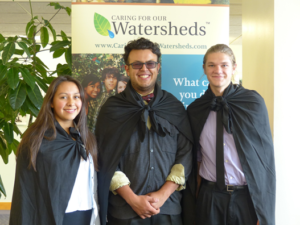
In order to reduce the use of pesticides in their city this team sought to put up bat houses around the Poudre Learning Center area. They discovered the Greeley parks and recreation department spends $50,000 annually on pesticides alone. Strategically, the main focus of the project is to reduce the amount of pesticide sprayed around Greeley. By hosting bats such as the Brazilian free-tailed bat, little brown bat, and the Canyon bat who all share a common appetite for mosquitoes, the population of mosquitoes will go down naturally. Mosquitoes can carry and spread diseases which factors greatly into why the city puts so much into controlling the population of the mosquitoes. However, the chemicals in pesticides have negative consequences such as affecting human health if ingested and the health of the entire watershed. To best reduce the use of pesticides the students wanted to show that it is best to work with nature to control the mosquito population and prevent chemical compounds from getting into the water. By raising awareness and showing the city bats can help control the mosquito population, the students hope that the use of pesticides will go down. It is crucial to protect our local watersheds for not only ourselves, but the generations to follow.
Eventually the mosquito population in the summer will rise, but the bat homes around the Poudre River will host the bats that feed on mosquitoes. Instead of using $50,000 worth of pesticides Greeley can decrease the amount of sprayed pesticides. The surrounding environment will benefit greatly especially the watershed because significantly fewer chemicals run into the water. Fewer chemicals equal healthier aquatic biomes and species – including humans – which survive on the Poudre watershed.
Author Archives: Chloe Sprecker
Post navigation

Quitting the Bottle
2015 Berthoud, Colorado, USA
On average Berthoud High School uses 15,000 water bottles a year. This is a huge waste of 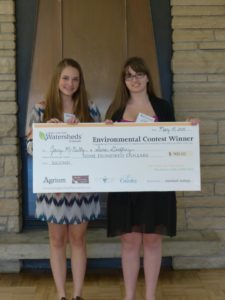 plastic. These students’ felt that as a high school, they could take the lead and be a role-model for the community by getting rid of plastic water bottles. Their proposition to reduce the amount of litter in their local watershed was to install a water bottle refill station in Berthoud High School. With this new refill station, students and staff are able bring in their own water bottles and refill them with clean, filtered water throughout the day in order to reduce the amount of plastic water bottles that they buy as an alternative. These bottles are often thrown away instead of recycled, meaning they end up in landfills, and thus pollute the watershed.
plastic. These students’ felt that as a high school, they could take the lead and be a role-model for the community by getting rid of plastic water bottles. Their proposition to reduce the amount of litter in their local watershed was to install a water bottle refill station in Berthoud High School. With this new refill station, students and staff are able bring in their own water bottles and refill them with clean, filtered water throughout the day in order to reduce the amount of plastic water bottles that they buy as an alternative. These bottles are often thrown away instead of recycled, meaning they end up in landfills, and thus pollute the watershed.
Before the water bottle refill station was installed, the school was selling up to 300 plastic bottles of water per day. Many of these bottles ended up in the trash bins rather than being recycled. With the new refill station, the students’ hope that water bottle sales will be a fraction of what they were in the past because more people will be choosing the reusable option. If all of the schools in the district installed these refill station, it would keep a monumental amount of plastic out of landfills and out of watersheds.
Gusto-Matic 5280-X
2015 Greeley, Colorado, USA
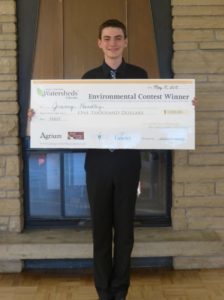
This project consists of a foot-powered hand dryer that uses no resources and saves tons of resources. To combat the major problem of paper waste and the electricity used as an alternative, this students’ proposal was to create a foot powered-hand dryer. This foot powered hand dryer will create no emissions from electricity generation and will have no paper waste from thrown away paper towels. The only energy consumed: calories. Only waste created: heat. If the hand dryer is installed in one bathroom, it can save 13.5 trees worth of paper towels, and 810 lbs. of coal in electricity generation over the course of one school year. The GUSTO-MATIC 5280-X has many environmental benefits. The immediate benefits include no paper waste, and no electricity consumption. This has many secondary effects, like no deforestation for the paper towels, no need to make more room in the land fill or take out the trash every day, no water pollution, no energy consumption from power plants, meaning no air pollution from the power plants.
I Thought I Saw A Tweety Bird
2015 Saskatoon, Saskatchewan, Canada
Jocelyn Lalach from St. Edward School is passionate about birds and is sharing that passion with others! Birds are an integral part of our watershed. Indeed, without them, many functions that they provide would no longer exist. Jocelyn explored the benefits of healthy bird populations and their benefits to the South Saskatchewan River Watershed such as reducing insect populations and seed transportation in the river valley.
Birds provide many benefits to our local watershed! Through transporting seeds in the river valley, 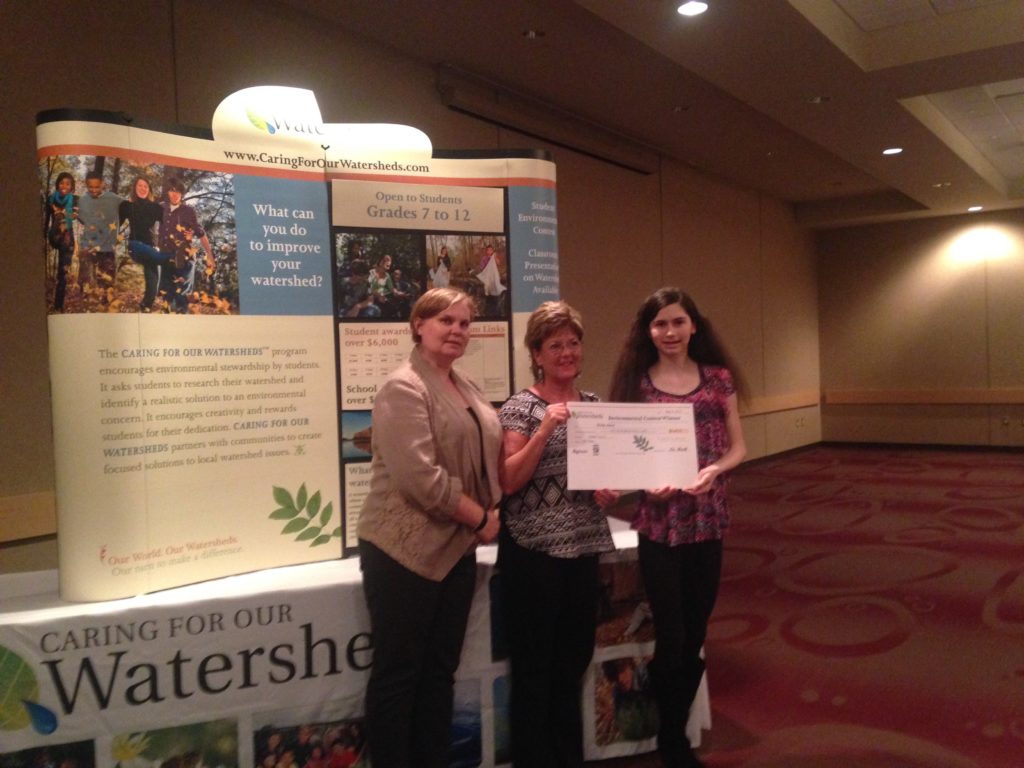 birds help new native shrubs grow and root in the riparian area providing wildlife habitat and other ecological services. The riparian area is the zone along river or creek banks close to the water. This zone needs strong and healthy shrubs to help keep pollutants out of our water ways. Plants in the riparian area slow down water and help it infiltrate and filter through soil and root systems before entering our watershed. This process reduces the amount of runoff entering our water ways and helps to prevent pesticides, fertilizers, and other pollutants from entering our watershed. As an added benefit, these shrubs and their root systems provide structure for the soil along river and creek banks which prevent erosion. Lastly, birds eat insects. The healthier our bird populations in our watershed the more insects they eat and the less pesticides we use to control them ourselves!
birds help new native shrubs grow and root in the riparian area providing wildlife habitat and other ecological services. The riparian area is the zone along river or creek banks close to the water. This zone needs strong and healthy shrubs to help keep pollutants out of our water ways. Plants in the riparian area slow down water and help it infiltrate and filter through soil and root systems before entering our watershed. This process reduces the amount of runoff entering our water ways and helps to prevent pesticides, fertilizers, and other pollutants from entering our watershed. As an added benefit, these shrubs and their root systems provide structure for the soil along river and creek banks which prevent erosion. Lastly, birds eat insects. The healthier our bird populations in our watershed the more insects they eat and the less pesticides we use to control them ourselves!
Jocelyn developed a curriculum based program called “I Thought I Saw a Tweety Bird” that educates students in grades 2 and 3 about the different types of bird species found in the South Saskatchewan River Basin. She developed a bird unit that is available online here: http://ycojchill.wix.com/birds-unit with all the necessary tools for teachers and students to learn about the importance of birds to their watershed. Jocelyn has left her website up online for teachers to access the curriculum material.
Xeriscaping our School
2015 Saskatoon, Saskatchewan, Canada
Manothri Malikarachichi and Sadie Simpson from Montgomery School focused their project on implementing a xeriscaped landscape at their school as a pilot project to educate students and their community about the benefits of using drought-tolerant plant species in place of conventional water consumptive landscaping techniques.
Xeriscaping has many benefits and helps our local watersheds in a number of ways. By planting with native and drought tolerant plants you are reducing how much outdoor water is used in your home. These plants require much less water than conventional lawn and gardens. Some native and drought 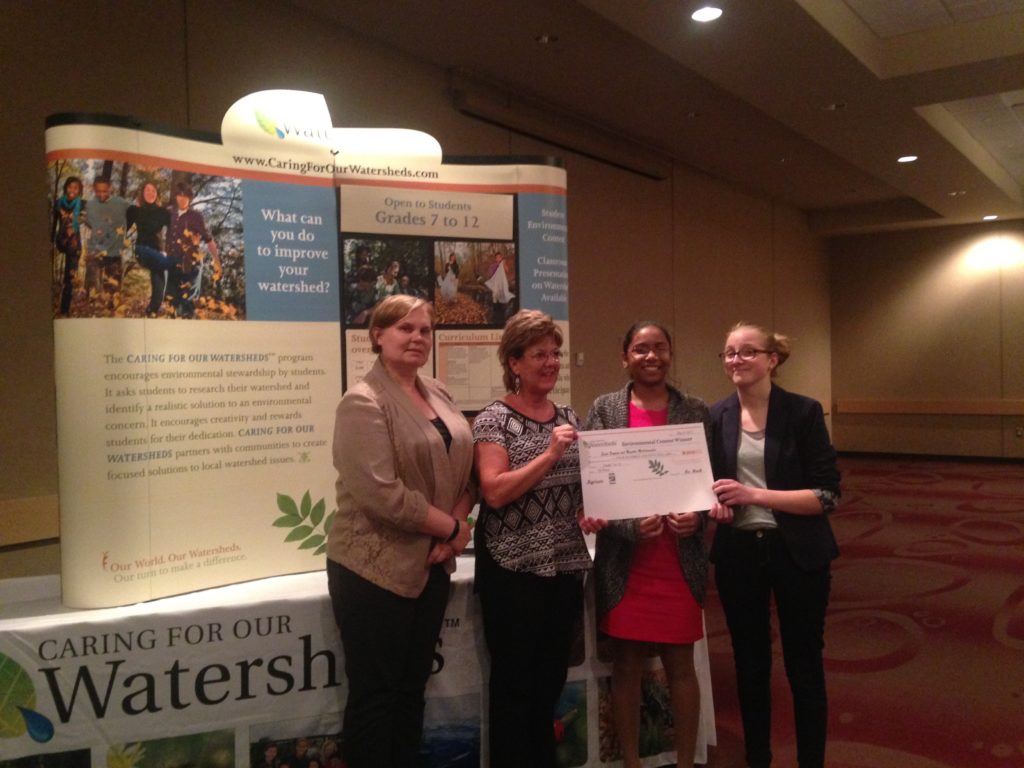 tolerant plants only require the intermittent rain that falls through Saskatoon’s summers!
tolerant plants only require the intermittent rain that falls through Saskatoon’s summers!
Xeriscaping is also beautiful. It provides pops of colour and beauty rather than the monotonous green patches of conventional lawns. Once a xeriscaped landscape is installed and established, there is little work needed. There is no need for excess watering, the use of pesticides, fertilizers or gas for mowing! All of these inputs on our lawn and gardens impact our watershed because they can wash into our storm drains and into the river harming sensitive aquatic habitat. But, with a xeriscaped garden, this doesn’t happen because those inputs are not needed.
The students worked with their school to install a xeriscaped landscape in their outdoor classroom area. They are hoping to receive neighbourhood support for long term maintenance in partnership with the school.
Environmental Empowerment
2015 Portland, Victoria, Australia
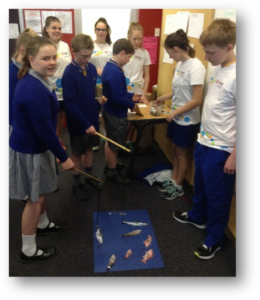
Students from Bayview College in Portland were finalists in the 2015 Caring for our Watersheds competition, with their proposal called Environmental Empowerment.
Nathalia, Meg, Marlie & Sarra came up with an Environmental Education Program to teach younger students about their environment. They collaborated all their classes’ final ideas for the 2015 CFW competition into one educational program to raise awareness about their classes concerns.
They held a kids teaching kids day with the year 7 students at Bayview College running a range of environmental activities which focused on:
- Overfishing
- Biodiversity in our backyards
- Litter and recycling
- Water pollution
- Local lagoon.
With constructive feedback from the year 7s the girls now plan to implement the program into the local primary schools as well.
This program is not only a fun filled day of environmental activities but it is teaching younger generations to care more for what is around them and how to look after their catchments environment now and into the future.
Turn Out the Lights and Join the Darkside
2015 Blackie, Alberta, Canada

The 8th place winner of the 2014 Caring For Our Watersheds competition was Riley Tirkaylo from Blackie School. Riley was concerned about light pollution in his community. Light pollution has several negative impacts on the ecosystem and watershed including: unnecessary energy consumption, interfering with the resting, feeding and migration patterns of wildlife, and impacting insect behavior and mating activities.
To address the issue of light pollution in his community, Riley designed a project to educate people about the impact of light pollution and provide community members with samples of LED light bulbs provided by Fortis Alberta.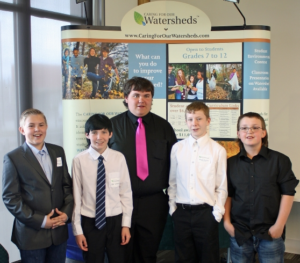
At Blackie’s “Green Day” event, Riley handed out hundreds of brochures that explained the hazards of light pollution and suggested ways in which people could reduce their energy consumption. Through collaboration with Fortis Alberta, Riley was also able to hand out free samples of LED light bulbs for people to use. These light bulbs are much more energy-efficient than the incandescent bulbs of the past.
Through this initiative, Riley has been able to inform people in his community about the negative effects of light pollution, provide people with alternative light bulbs and spread the word about watershed health and environmental stewardship.

Microbeads Educational Video
2015 Blackie, Alberta, Canada

The 2015 Caring For Our Watersheds 4th place contest winners were Brayden Brausse and Nicholas Locken from Blackie School. These students were concerned about micro beads in the watershed, and the impact these small pieces of plastic have on plants, animals and water quality.
To bring awareness to this issue, the students produced a video about the harmful effects of micro beads and the use of alternative products that do not cause harm to the watershed.
Mirco beads come in 2 forms—polyethylene and polypropylene, both of which are used in household products such as exfoliating face washes and toothpaste. Micro beads are no bigger 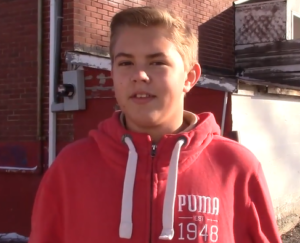 than a grain of sand can pass through storm water and waste water treatment systems (unfiltered) into the watershed. This plastic can then be ingested by fish and other sea-life and move up the food chain into larger creatures.
than a grain of sand can pass through storm water and waste water treatment systems (unfiltered) into the watershed. This plastic can then be ingested by fish and other sea-life and move up the food chain into larger creatures.
Alternatives to products containing micro beads are plentiful and widely available. They include cleansers containing walnut shells, apricot seeds or oatmeal. Through their educational video, these students were able to provide information about the harmful effects of micro beads on the watershed, and inform people on available alternatives.
Game for Change
2015 Calgary, Alberta, Canada
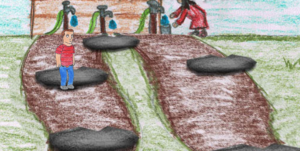
The 9th place winners of the 2014 Caring for Our Watersheds competition were Maddie Catling and Sarah Abt from St. James School. As part of their Global Leadership Class, these students were involved with the development of a web game entitled “Game for Change”.
This game teaches people about global environmental issues, including the state of our watersheds. The objective of the game is to reach a certain standard of living so you can sustain your life. The more developed the country you choose, the easier it is to reach this sustainable level. You ‘win’ when you have: 50 Health Points, 50 Water Points, 30 Education Points, $75 Global Bucks or a biosand filter or plumbing. Once players complete the game, they can visit the “actions you can take” page for lesson plans, stewardship information and ideas about how to decrease environmental footprints.
Through the development of the “Game For Change”, students from St. James school not only learned about their local watershed and environmental stewardship, they were able to educate people worldwide about the state of our watershed and how to have a positive impact on the environment regardless or economic status or geographic area.
Compost Waste Management
10th place winners in the 2015 Caring For Our Watersheds competition, Shane Hudson and Brady Waisman, from Blackie School, were concerned about composting in their community. As there is no municipal composting program in the small hamlet of Blackie, these students were worried that the majority of compost from homes was being sent to the local landfill.
As a solution to this problem, the students designed a project in which people from their community would receive education about composting, as well as free composters at Blackie’s annual “Green Day” event.
Through the initiative of these students, community members, students and teachers were educated as to the value of composting, as well as given composters to use at their homes. This project provided dozens of composters to home-owners, which will not only decrease the amount of compostable food waste entering the landfill, but will also encourage people to use compost on their gardens and spread the word about how composting has a positive impact on the local watershed.
